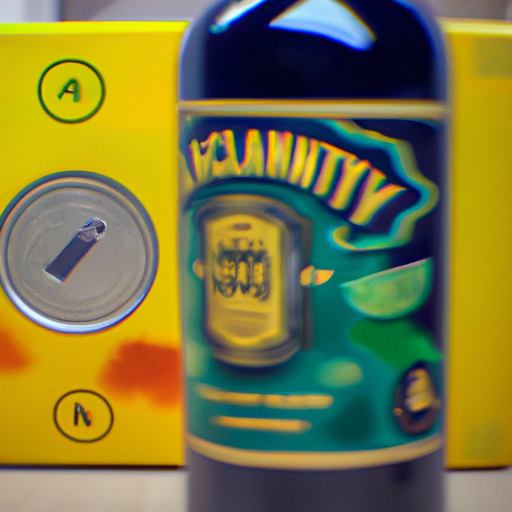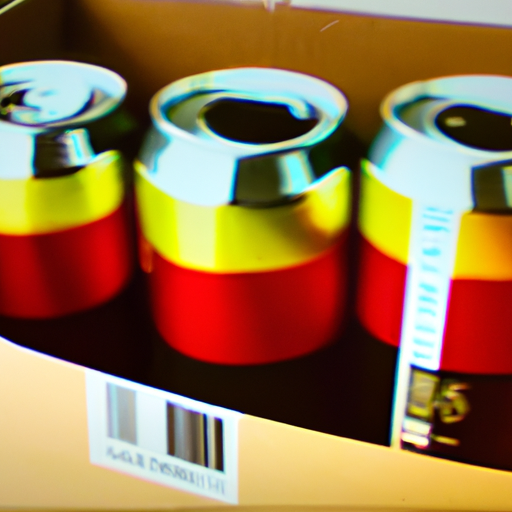
-
Table of Contents
- Alcohol Packaging Laws: Staying Compliant
- The Importance of Alcohol Packaging Laws
- Key Elements of Alcohol Packaging Laws
- Labeling Requirements
- Age Verification Mechanisms
- Advertising and Marketing Restrictions
- Case Study: Alcohol Packaging Laws in the United States
- Staying Compliant with Alcohol Packaging Laws
- Stay Informed
- Seek Legal Advice
- Invest in Quality Control
- Collaborate with Regulatory Agencies
Alcohol Packaging Laws: Staying Compliant

Alcohol packaging laws play a crucial role in ensuring the safety and integrity of alcoholic beverages. These laws are designed to protect consumers from misleading information, prevent underage drinking, and promote responsible consumption. For alcohol producers and retailers, understanding and complying with these laws is essential to avoid legal consequences and maintain a positive brand image. In this article, we will explore the key aspects of alcohol packaging laws and provide valuable insights on how to stay compliant.
The Importance of Alcohol Packaging Laws
Alcohol packaging laws serve several important purposes:
- Consumer Protection: Alcohol packaging laws aim to protect consumers from misleading or false information. They require accurate labeling of alcohol content, ingredients, and potential allergens. This ensures that consumers can make informed decisions about the products they purchase and consume.
- Preventing Underage Drinking: Alcohol packaging laws include regulations to prevent underage drinking. These laws often require age verification mechanisms on packaging, such as age-restricted labels or tamper-evident seals. By implementing these measures, alcohol producers and retailers can help prevent minors from accessing alcoholic beverages.
- Promoting Responsible Consumption: Alcohol packaging laws also play a role in promoting responsible drinking habits. They may require warning labels about the potential health risks associated with alcohol consumption, as well as information about responsible drinking guidelines. These measures aim to raise awareness about the potential dangers of excessive alcohol consumption and encourage moderation.
Key Elements of Alcohol Packaging Laws
Alcohol packaging laws vary across different countries and jurisdictions. However, there are several common elements that alcohol producers and retailers should be aware of:
Labeling Requirements
Accurate and clear labeling is a fundamental aspect of alcohol packaging laws. The following information is typically required on alcohol labels:
- Alcohol Content: The alcohol content must be clearly stated on the label. This is usually expressed as a percentage of alcohol by volume (ABV) or proof.
- Product Name and Brand: The label should include the product name and brand to ensure proper identification.
- Ingredients: The ingredients used in the production of the alcoholic beverage must be listed. This is particularly important for individuals with allergies or dietary restrictions.
- Health Warnings: Many jurisdictions require health warnings on alcohol packaging. These warnings may include information about the risks of drinking during pregnancy, the dangers of excessive alcohol consumption, and the importance of drinking responsibly.
- Country of Origin: The label should indicate the country where the alcoholic beverage was produced.
Age Verification Mechanisms
To prevent underage drinking, alcohol packaging laws often require age verification mechanisms. These mechanisms can include:
- Age-Restricted Labels: Some jurisdictions require alcohol packaging to display age-restricted labels, indicating that the product is intended for individuals of legal drinking age.
- Tamper-Evident Seals: Tamper-evident seals can help ensure that the product has not been opened or tampered with before purchase. These seals can also serve as a visual indicator that the product is intended for individuals of legal drinking age.
- Unique Packaging Design: Some countries require unique packaging designs for alcoholic beverages, making it easier to identify and differentiate them from non-alcoholic products.
Advertising and Marketing Restrictions
Alcohol packaging laws often include restrictions on advertising and marketing practices. These restrictions aim to prevent misleading or deceptive advertising and protect vulnerable populations, such as minors. Common advertising and marketing restrictions include:
- Prohibition of False or Misleading Claims: Alcohol packaging laws typically prohibit false or misleading claims about the product, its health benefits, or its effects.
- Restrictions on Targeting Minors: Advertising and marketing practices that specifically target minors or encourage underage drinking are strictly prohibited.
- Placement Restrictions: Some jurisdictions have specific rules regarding the placement of alcohol advertisements, such as prohibiting them near schools or playgrounds.
Case Study: Alcohol Packaging Laws in the United States
To illustrate the impact of alcohol packaging laws, let’s take a closer look at the regulations in the United States.
In the United States, alcohol packaging laws are primarily regulated by the Alcohol and Tobacco Tax and Trade Bureau (TTB), a part of the Department of the Treasury. The TTB enforces labeling and advertising regulations for alcoholic beverages sold in the country.
Some key requirements for alcohol packaging in the United States include:
- Alcohol Content Labeling: All alcoholic beverages sold in the United States must clearly state the alcohol content on the label. This can be expressed as a percentage of alcohol by volume (ABV) or proof.
- Health Warning Statements: The TTB requires specific health warning statements on alcohol packaging. These warnings include messages about the risks of drinking during pregnancy, the dangers of drinking and driving, and the potential health consequences of excessive alcohol consumption.
- Label Approval: Before selling alcoholic beverages in the United States, producers must obtain label approval from the TTB. This ensures that the labels comply with all relevant regulations.
Failure to comply with alcohol packaging laws in the United States can result in penalties, including fines and product recalls. It can also damage a brand’s reputation and lead to a loss of consumer trust.
Staying Compliant with Alcohol Packaging Laws
To stay compliant with alcohol packaging laws, alcohol producers and retailers should consider the following strategies:
Stay Informed
Alcohol packaging laws can change over time, so it’s crucial to stay informed about the latest regulations in your jurisdiction. Regularly review the laws and regulations applicable to your products and ensure that your packaging complies with all requirements.
Seek Legal Advice
If you are unsure about specific requirements or need assistance with compliance, consider seeking legal advice. A lawyer with expertise in alcohol packaging laws can provide valuable guidance and help you navigate the complex regulatory landscape.
Invest in Quality Control
Implementing robust quality control measures is essential to ensure compliance with alcohol packaging laws. Regularly review your packaging materials, labels, and marketing materials to ensure they meet all legal requirements. Conduct internal audits and inspections to identify any potential issues and address them promptly.
Collaborate with Regulatory Agencies
Building a positive relationship with regulatory agencies can
